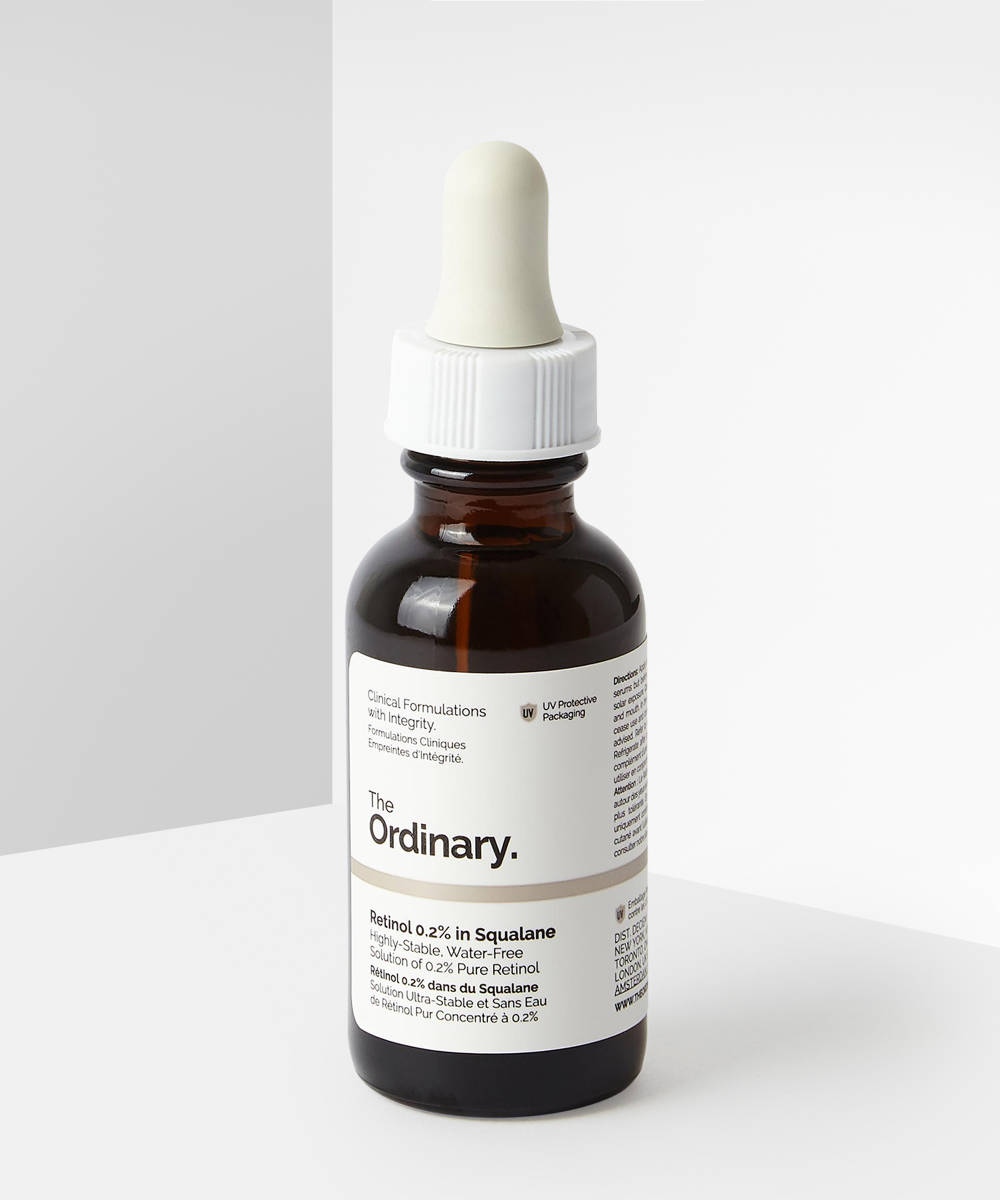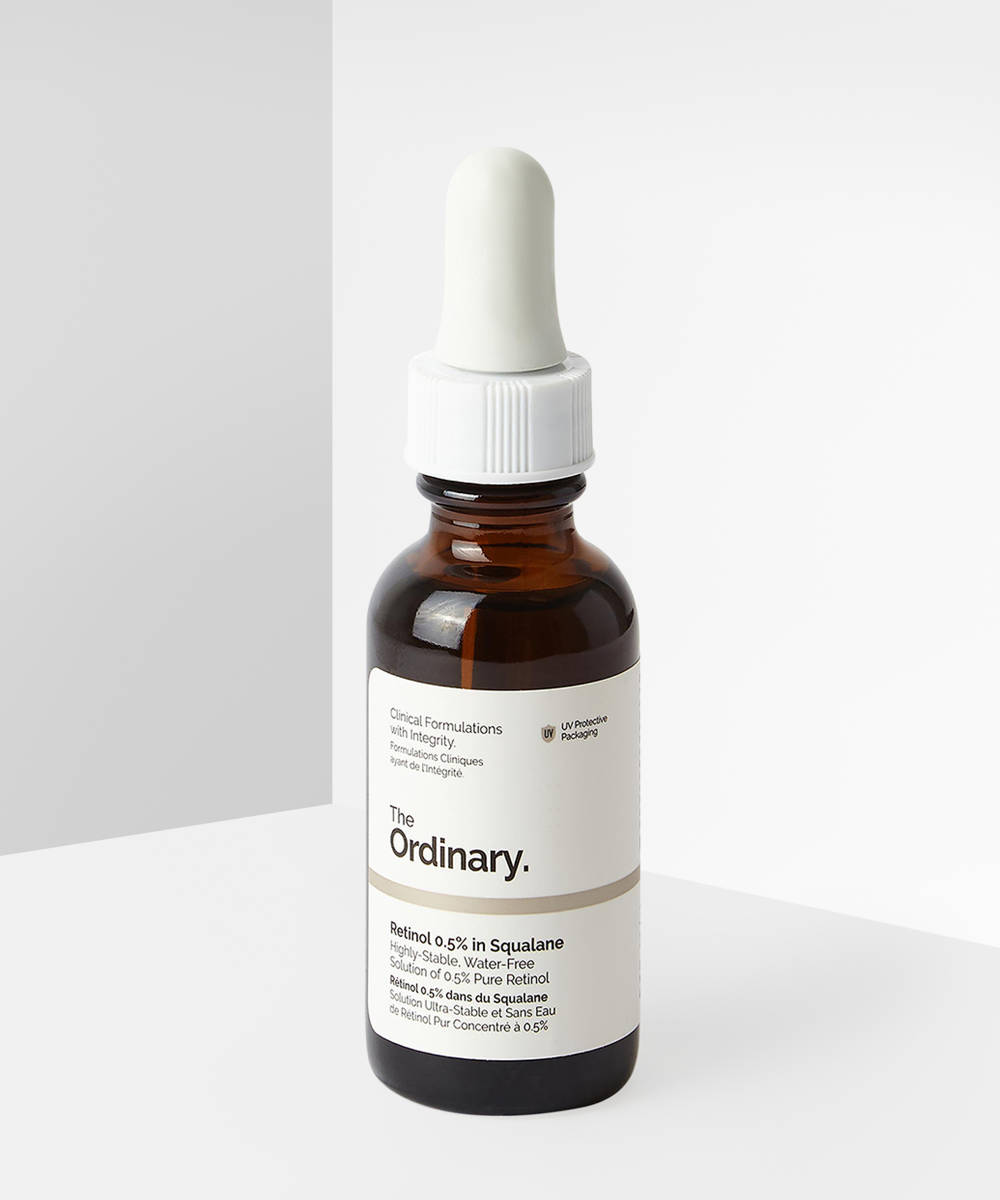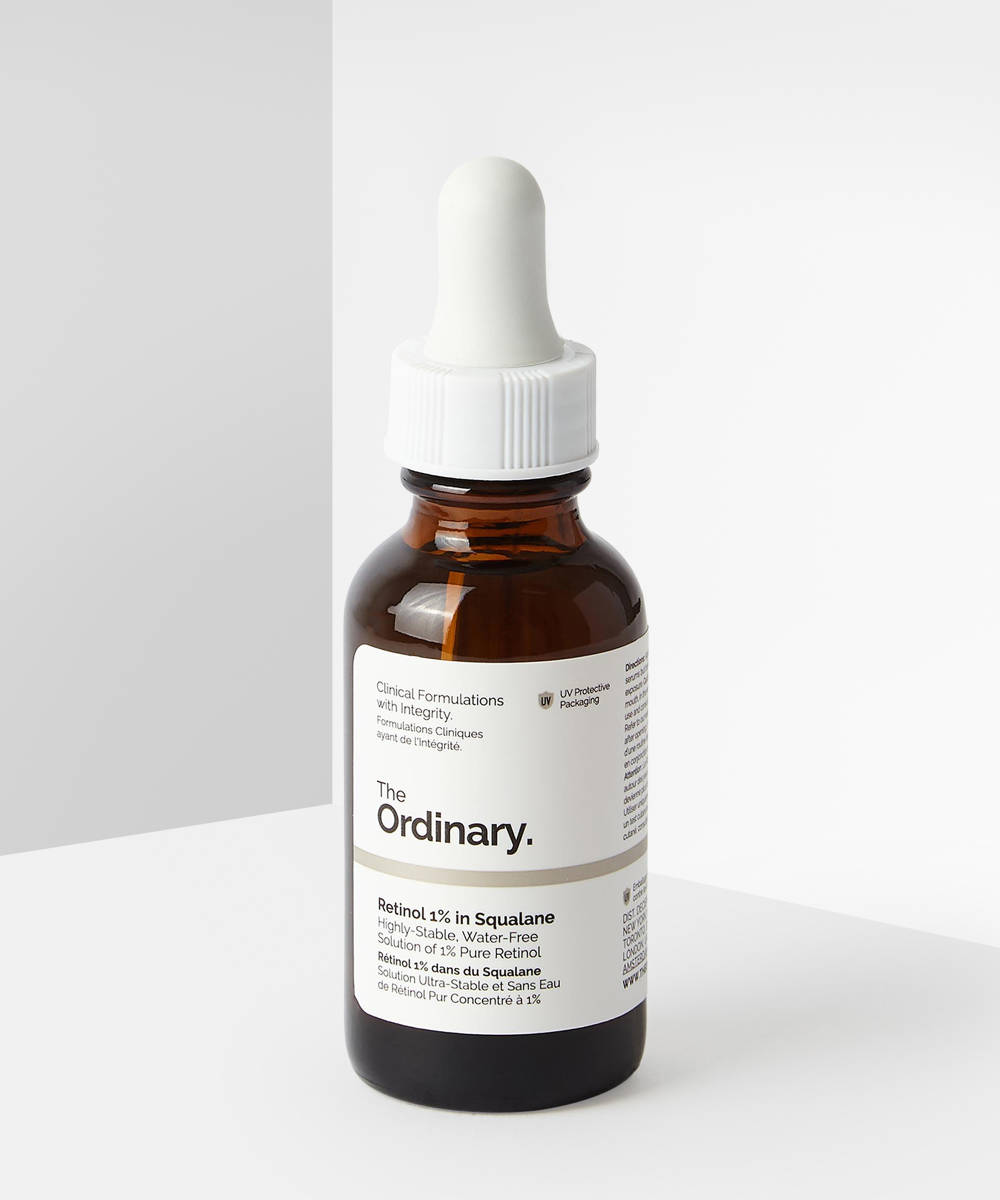Thanks to its powerful formulas and jaw-droppingly affordable prices, skincare professionals and beauty obsessives alike are understandably obsessed with The Ordinary’s straightforward but smart products. The only catch it that you need to be clued up on your skincare ingredients to know exactly what each one does and whether it will work for you.
The Ordinary’s Retinol in Squalane range is one of our favourites, but what does it do? Not only because retinol helps to speed up cell turnover, trigger collagen production, tackle pigmentation, and reduce congestion, but because squalane is a gentle and nourishing ingredient which offers benefits for all skin types if you use everyday.
Scroll down to read our full review on The Ordinary Retinol in Squalane.
1) Reduced side effects
Dryness, redness, irritation, increased sensitivity, and even breakouts are just a few of the side effects that can unfortunately come hand-in-hand with using retinol. While this transition or ‘purging’ period likely won’t last forever, it’s enough to persuade some people to give up on retinol before they’ve seen the benefits. However, thanks to its squalane-based formula, this one simultaneously helps to soothe, soften, and moisturise skin.
2) It's good for beginners
Retinol is powerful, and first time users are more likely to experience the above side effects than those who have used retinol previously. Because the side effects of the retinol are reduced thanks to the nourishing squalane, this formula is perfect for those who are introducing retinol into their skincare routine for the very first time.
3) It's easy to add into a routine
It can be hard to know when to incorporate retinol into your skincare routine, especially if you’re already using other active ingredients like AHAs, BHAs, or vitamin C, which experts recommend you shouldn’t apply at the same time as each other, or as retinol. Most retinol products are serums which would be applied post-cleanse and pre-moisturiser, but because this formula sees the retinol suspended in an oil, it should be the final step in your skincare routine, after moisturising.
4) Squalane doesn't cause breakouts
Squalane is derived from olives, but it mimics squalene – an oil naturally produced by our own oil glands. Squalene helps to hydrate and strengthen the skin’s natural moisture barrier, so essentially, our bodies know what it is and what to do with it. Squalane is non-comedogenic (won’t clog pores) and is non-irritating and odorless, so even the most sensitive skintypes are unlikely to react to it.
5) It's available in different strengths
If you are new to using retinol or have had a negative experience with the ingredient in the past, the good thing about this formula is that it’s available in different strengths. You can start with the 0.2% formula (which has the lowest amount of retinol) and progress to the 0.5% and 1% strengths as your skin gets used to the ingredient.
6) The water-free formula is more stable
Many retinol serums are water-based but water can affect the stability of the retinol and cause it to become ineffective or potentially irritating. Because this formula is oil-based, the oil helps to protect the retinol and prevent destabilising from happening.
7) It's suitable for dry skin
Due to retinol speeding up cell turnover, it can often result in tight, dry, and flaky skin, particularly during the adjustment period — something that might be a problem for those with dry skin. That’s where the squalane comes in to save the day. It keeps the skin barrier strong and protected, reducing any retinol-related dryness.
8) It's good for facial massage
Squalane has a slippy, oily texture, making it ideal for facial massage. We’d always recommend facial massages if you’re looking to step your skincare up a gear. It increases lymphatic drainage and tones facial muscles, leaving you with clear, depuffed, and soft skin.




